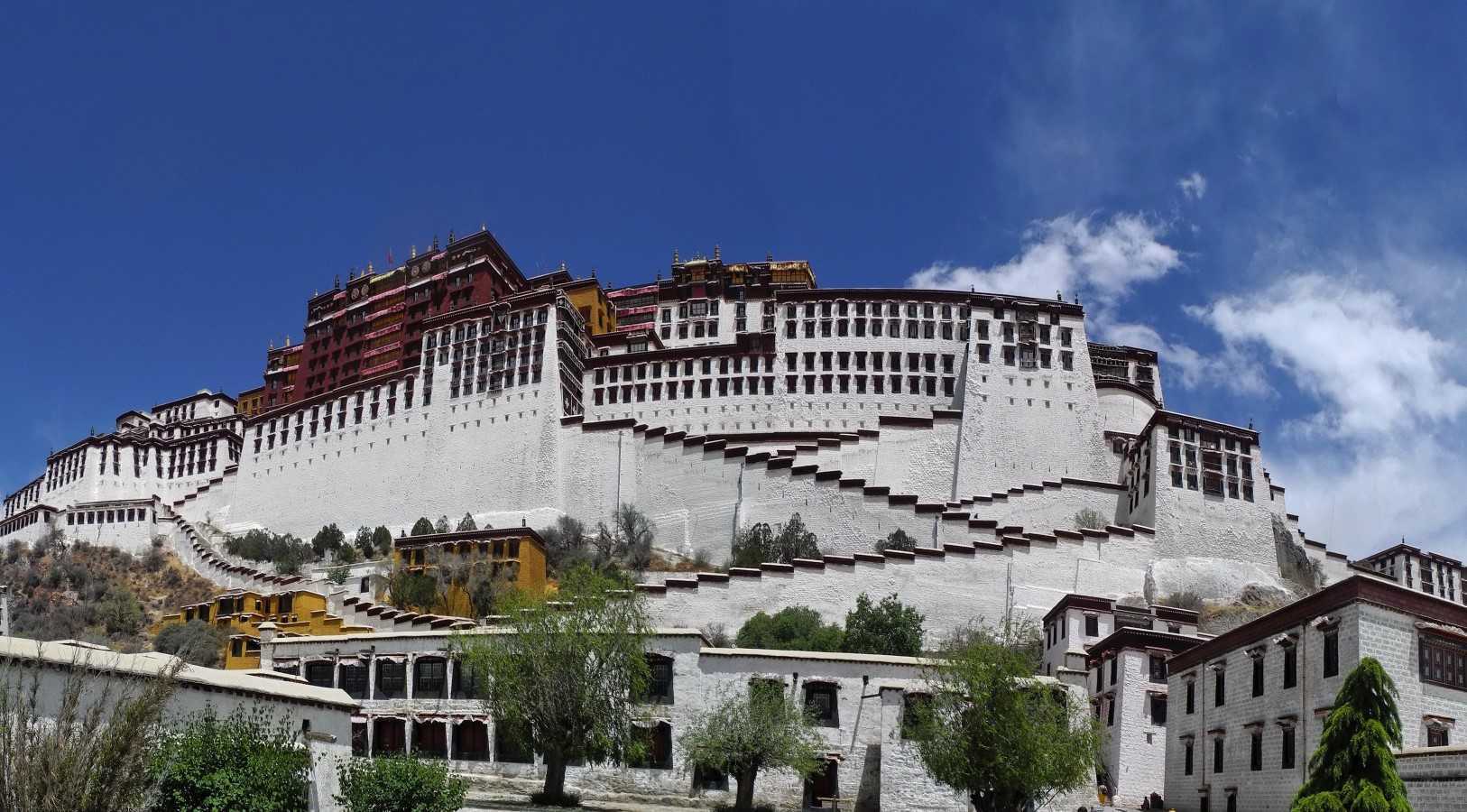The existential challenge facing Tibetan Buddhism in Tibet Autonomous Region is acceptance of Chinese legitimacy. Indeed, the improvement in quality of life for Tibetans under Chinese control does not bode well for the legacy of the 14th Dalai Lama. Nonetheless, it need not result in the elimination of Tibetan Buddhism in Tibet or elsewhere.
Buddhism in China has existed for over 1000 years and predates Tibetan Buddhism. For example, iconic Buddhist deities such as Guan Yin and Happy Buddha are ubiquitous plus monuments such as the Leshan Buddha statue, Emei Shan and Wutai Shan have remained extremely popular. Additionally, after nearly 70 years of communist control Buddhism remains as popular as ever in China.
The prevalence of Buddhism in China begs the question – Why would Chinese control mean the end of Tibetan Buddhism in Tibet? Indeed, Chinese control could mean the best of both worlds for the Tibetans who live there. As a result, Tibetans have the freedom to retain their historical religion but also maintain improved living standards.
Feudal System Under Tibetan Buddhism in Tibet
Since the Dalai Lama went into exile in 1959, Tibetan Buddhism in Tibet underwent sweeping demographic and social changes. Most notable was the abolition of feudal serfdom which essentially released 95% of Tibet’s population from a life of slavery and abject poverty.
Under theocratic rule of the Dalai Lamas’, Tibetan serfs led hopeless lives. For many centuries, they were kept illiterate, impoverished and burdened with usurious debts they could never repay.
Only the aristocrats had the right to own property (including serfs). Additionally, obtaining basic necessities such as an education for their children, health care, nutrition or even the right to marriage was for aristocrats only.
Furthermore, the country’s agrarian economy was in the dark ages. 99% of the country had no electricity, agricultural output was abysmal, foreign trade non existent and there was no infrastructure.
As a result, it can be assumed that many Tibetans may have welcomed the exile of the 14th Dalai Lama and the progressive economic and social changes brought by the Chinese government.
Better Quality of Life Since Dalai Lama Exile in 1959
To be clear, the Chinese government has lifted hundreds of millions of its own people out of poverty in less than 50 years (including ethnic Tibetans). This is unprecedented and they have done it without the assistance of the World Bank and the IMF.
Undoubtedly, if the Chinese government had listened to Western hypocrisy so many people would still be suffering – especially in Tibet.
The demographics belie the apocalyptic prophecies of Western populists who idolize the Dalai Lama at the expense of the majority of Tibetans.
| Demographic | 1959 | 2017/18 |
| Child Mortality | 50/1000 | 1.02/1000 |
| Infant Mortality | 430/1000 | 10.38/1000 |
| Primary School Enrollment | <5% | 99.5% |
| Junior High Enrollment | <5% | 99.5% |
| Senior High Enrollment | <5% | 82.3% |
| Higher Education | <5% | 39.2% |
| Income per Capita | 0 (serfs) | Urban Residents 33,797 CNY Rural Residents 11,450 CNY |
| Population (90% ethnic Tibetan) | 1.23 million | 3.44 million |
| Life Expectancy | 35.5 years | 68.2 years |
Conflicting Legacies of the 14th Dalai Lama
The legacy of the 14th Dalai Lama inside Tibet lies in stark contrast to his legacy outside of Tibet. In the West he is worshiped by clueless Hollywood deities and their followers. Additionally, the Tibetan diaspora is a small minority consisting of theocratic and aristocratic elites who oppressed the masses for many centuries while in Tibet.
As a result, outside of Tibet the Dalai Lama is preaching to the choir, not the vast majority of Tibetans who are located inside of Tibet.
Inside of Tibet, it very unlikely Tibetans would voluntarily reinstate a feudal system under control of the Dalai Lama. Given the chance to vote, it is equally unlikely they would accept theocratic rule.
Indeed, if cavalier westerners could experience the hopeless poverty of feudal serfdom for five minutes, so quickly would they become enlightened.
Future of Tibetan Buddhism in Tibet
Nonetheless, without western interference, Tibetan Buddhism in Tibet still has a strong chance of survival. As of 2018, Tibetan Buddhism is practiced at 1,700 locations throughout the Tibet Autonomous Region. Additionally, there are currently 46,000 Tibetan Buddhism monks and nuns.
However, retrogressing to guerilla tactics advocated by the 14th Dalai Lama such as self immolation will not be successful. Additionally, guerilla warfare against Chinese authorities e.g. Hong Kong protestors will result in the quick elimination of all traces of Tibetan Buddhism inside of the Tibet Autonomous Region.
Pragmatism must be the way forward for advocates of Tibetan Buddhism lest they do more harm than good. For now, the future of Tibetan Buddhism in Tibet is safely in the hands of the majority of Tibetans who live there.
Source of Demographic Statistics: Tibet Since 1951: Liberation, Development and Prosperity

